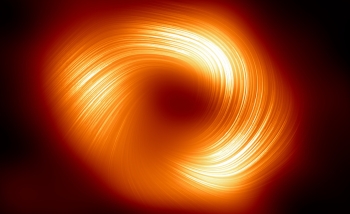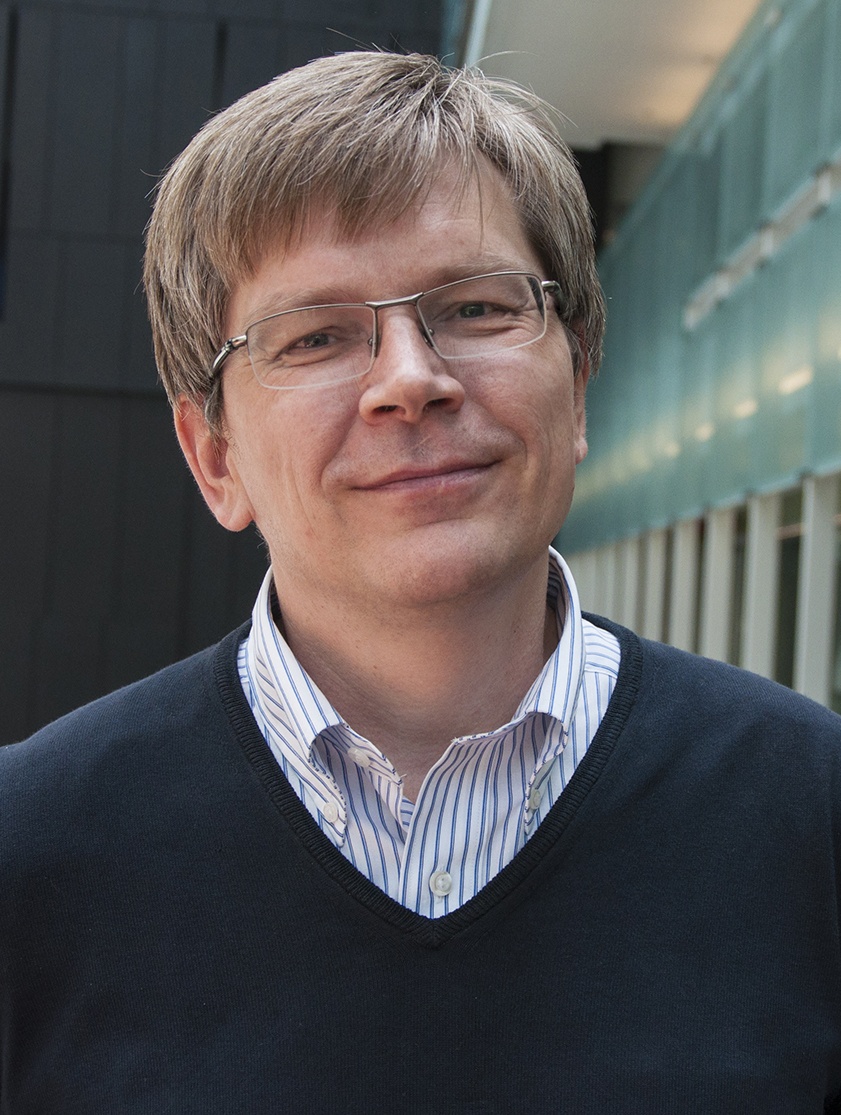There’s nothing like a good anomaly. In science, anomalies – places where theory contradicts observation – drive progress.
As Isaac Asimov once said, “The most exciting phrase to hear in science, the one that heralds new discoveries, is not ‘Eureka!’ but ‘That’s funny….’”
Cosmology, sadly, suffers from a lack of anomalies. Where it makes predictions at all, the standard cosmology tends to be spot on. But there’s an exception: there is not enough lithium-7 in the early universe.
Perimeter Associate Faculty member Maxim Pospelov has been trying to figure out what happened to that lithium for more than a decade. Now, he and his colleagues have a new idea – one that invokes an unknown particle which they dubbed “particle X.”
“To me, the lithium problem is quite intriguing,” says Pospelov. “It is a good hard problem that has been around for many years. It’s one of the best cracks through which we might glimpse new ideas.”
So what exactly is the lithium problem? Using a model called big bang nucleosynthesis, we can calculate the relative amounts of light elements that were produced in the early universe. We can also observe how much of each element was present in the earliest stars. For the most part, the theory and the prediction line up. The model calls for three parts hydrogen to every one part helium, with a dash of deuterium (about 0.01 percent) and even smaller quantities of the two isotopes of lithium, lithium-6 and lithium-7.
Observations check these ratios and find the predictions to be very accurate. But there is one outlier: lithium-7. That prediction is off by a factor of three. About two-thirds of the lithium-7 predicted by the big bang nucleosynthesis model is missing.
Is the model of big bang nucleosynthesis simply wrong? That seems unlikely, because its other predictions are so good. Might the lithium be present but somehow hidden? The best efforts to find it have yet to pan out. Might something have happened to the lithium-7 along the way? That’s the line along which Pospelov has been working.
Pospelov’s research often lies at the intersection of particle physics and cosmology. Working with Josef Pradler – a former Perimeter postdoctoral researcher and long-time collaborator – and Andreas Goudelis of the Institute of High Energy Physics in Austria, Pospelov set out to see if there might be a particle physics solution to the lithium-7 problem.
As described in the paper “A light particle solution to the cosmic lithium problem,” published in Physical Review Letters, the team reverse-engineered a hypothetical particle that could destroy lithium without affecting the relative abundance of hydrogen, helium, and deuterium. They called it particle X.
“I have to stress that this is the realm of speculation,” says Pospelov. “Speculation is a bad word in Russian, but in English it’s fine.” A bad word? “In Russia, speculators are the guys who get put in jail,” he explains, “but in physics it is sometimes good to follow speculative ideas carefully. Sometimes something interesting emerges.”
In this case, something interesting did emerge: a hypothetical particle that could resolve the lithium anomaly.
Though any new particle would obviously be outside the Standard Model of known particle physics, there are ones that look reasonable and ones that look out-of-whack. Particle X looks reasonable. Indeed, it looks reasonable enough that the next step in the research is to plan experiments to check for its existence.
To reverse-engineer particle X, the team first supposed a long lifetime: on the order of 1,000 seconds. That’s long enough that it could have been created during the big bang, and survived the hot and violent first three minutes of the universe to reach the relative calm where the light elements were formed. “A thousand seconds is a benchmark – the period where the most critical reactions for lithium occur,” explains Pospelov. “If there were an input of neutrons right at this time, for instance, you would inhibit the production of lithium.”
Many previous attempts to tackle the lithium abundance problem with ideas from particle physics have posited a hypothetical heavy particle whose decay produces neutrons. Add neutrons to the mix at the 1,000-second mark, and lithium formation is suppressed.
But that’s not the only thing those neutrons would do. They would also increase the abundance of deuterium – and that’s not a good thing. The problem with increasing the predicted abundance of deuterium in the universe is that we recently learned to measure the real abundance of deuterium in the early universe.
“These measurements became as good as a few percent in the last years, and they are bang-on the predictions of big bang nucleosynthesis,” says Pospelov. “Therefore this idea of new particles that produce neutrons doesn’t work. When we learned to measure deuterium abundance, a hundred models died in a moment.
“Our idea is to work around this. The idea was not introduce new neutrons, but to free up existing neutrons only for a short time.”
The next assumption the team made was the mass of particle X: about 10 MeV. That’s about 20 times heavier than an electron, and about 100 times lighter than a proton.
Unlike previous hypothetical particles, it is too light to decay into neutrons. Instead, the team envisions particle X producing neutrons by breaking apart the deuterium, whose nucleus contains one proton and one neutron. “The particle would hit that nucleus and knock the neutron free,” says Pospelov.
These knocked-free neutrons would enter the soup of the big bang nucleosynthesis, suppressing the formation of lithium. But those neutrons would be quickly swept back up to form deuterium again. As the soup cooled, the ultimate abundance of the deuterium would be unchanged. The team calls the process neutron recycling, and it seems to solve the lithium abundance problem without introducing changes to the otherwise successful model of big bang nucleosynthesis.
It would be great, lithium-wise, if particle X did exist, but at the moment the idea is still speculative (in the good sense). The team’s next step would be to seek independent lines of evidence for particle X, starting with searches at earthbound particle physics experiments.
The good news is that the team’s theory is well developed and sophisticated enough to predict experimental signatures. And, at only 10 MeV, particle X should be well within the energy range we can study at particle accelerators. However, it interacts – or “couples,” to use the particle physics language – only weakly, which makes it hard to spot.
“It’s not like a photon or an electron, or even a pion or kaon,” says Pospelov. “The couplings we’ve introduced are strong enough to have an effect on big bang nucleosynthesis, but that’s not very strong.”
They might start testing, Pospelov suggests, with the sort of experiments that go by the unpoetic name of beam-dumps. In these experiments, a beam of energetic particles is driven into a thick piece of shielding: the dump. Only fairly long-lived particles can come out the other side. The 1,000-second lifetime for particle X may seem short on the scale of the universe, but on the scale of particle physics, where most exotic particles last for blinks, 1,000 seconds is long enough to qualify as stable or meta-stable.
“You would look for a particle emerging from the beam dump. It would occasionally interact or decay in the detector.”
Also, since the particle interacts fairly weakly, it might be good to look for it in experiments that specialize in weakly interacting particles, such as the deep underground ones that look for dark matter or study neutrinos. “All I need is someone willing to let me put a small accelerator next to a big neutrino detector,” says Pospelov, and laughs. It does seem a bit like putting a bandshell in a hospital zone: a hard sell. “These are some small challenges I need to address.”
Also on the to-do list: building a complete field-theoretical model that would include particle X without making a mess of the Standard Model.
“Speculations are very nice,” says Pospelov, “but what we need is either a discovery or a firm exclusion.”
And perhaps, someday, a name for the mysterious particle X.
About PI
Perimeter Institute is the world’s largest research hub devoted to theoretical physics. The independent Institute was founded in 1999 to foster breakthroughs in the fundamental understanding of our universe, from the smallest particles to the entire cosmos. Research at Perimeter is motivated by the understanding that fundamental science advances human knowledge and catalyzes innovation, and that today’s theoretical physics is tomorrow’s technology. Located in the Region of Waterloo, the not-for-profit Institute is a unique public-private endeavour, including the Governments of Ontario and Canada, that enables cutting-edge research, trains the next generation of scientific pioneers, and shares the power of physics through award-winning educational outreach and public engagement.
You might be interested in



Why we have not discovered dark matter: A theorist's apology | Public Lecture
February 1, 2024
